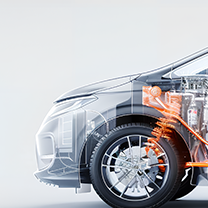
Products
Fast, Reliable, Everywhere

Solutions
Efficient, Innovative EV Charging Solutions.
As electric vehicle (EV) adoption continues to accelerate, designing a well-planned DC fast charging site has never been more important. It’s not just about where to place the chargers—it’s about optimizing layout, accessibility, efficiency, and the user experience to ensure long-term profitability and adaptability.

Whether you're building from scratch or integrating chargers into an existing business, consider these six essential pillars when developing your site:
Gone are the days when simply offering a charger was enough. Today’s EV drivers expect more: seamless access, efficient layouts, comfort while waiting, and value-added services. Strategic site design influences:
The EV infrastructure market is projected to grow exponentially, reaching nearly $100 billion by 2030. A future-ready site design anticipates rising demand and evolving technology. Future-proofing strategies include:
A successful site layout balances installation cost, accessibility, and the driver experience. Key considerations:
Charger Quantity: Base your count on EV density, local adoption trends, and budget.
Grid Proximity vs. User Convenience: While closer grid connections reduce install costs, premium customer experience areas (hotels, malls, restaurants) may be further away.
Cable Routing: Design efficient conduit paths to minimize trenching and cabling costs.
Signal Strength: Ensure strong mobile connectivity by surveying signal strength across the site.
Avoiding Physical Obstacles: Stay clear of tree cover, underground utilities, or debris-prone zones.
Parking Bay Layout: Perpendicular stalls are ideal for accommodating varied EV port placements. Plan stall dimensions for ease of access and comfort.
A solid foundation ensures a long-lasting, weather-resilient installation.
Accessibility isn’t just good ethics—it’s good business.
While charging, customers have time to spend—and spend more when they’re comfortable.
Potential Revenue Streams:
Free Amenities to Improve Experience:
Designing a high-performance DC fast charging site goes beyond hardware—it’s about thoughtful planning that aligns infrastructure investment with long-term usability, driver satisfaction, and revenue growth. By marrying convenience, technical excellence, and the customer journey, your charging site can become a valuable asset in the EV revolution.
